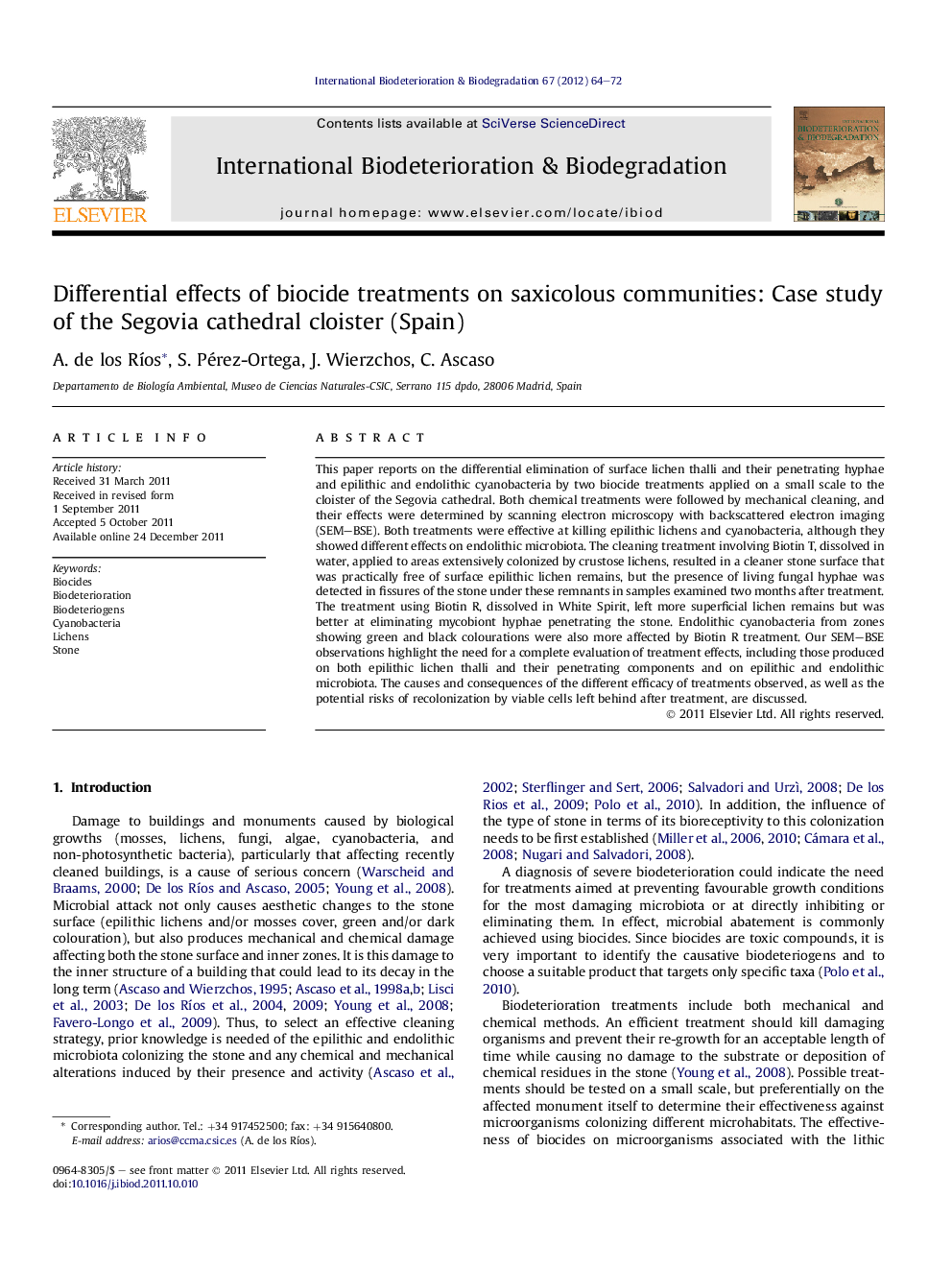| Article ID | Journal | Published Year | Pages | File Type |
|---|---|---|---|---|
| 4365272 | International Biodeterioration & Biodegradation | 2012 | 9 Pages |
This paper reports on the differential elimination of surface lichen thalli and their penetrating hyphae and epilithic and endolithic cyanobacteria by two biocide treatments applied on a small scale to the cloister of the Segovia cathedral. Both chemical treatments were followed by mechanical cleaning, and their effects were determined by scanning electron microscopy with backscattered electron imaging (SEM–BSE). Both treatments were effective at killing epilithic lichens and cyanobacteria, although they showed different effects on endolithic microbiota. The cleaning treatment involving Biotin T, dissolved in water, applied to areas extensively colonized by crustose lichens, resulted in a cleaner stone surface that was practically free of surface epilithic lichen remains, but the presence of living fungal hyphae was detected in fissures of the stone under these remnants in samples examined two months after treatment. The treatment using Biotin R, dissolved in White Spirit, left more superficial lichen remains but was better at eliminating mycobiont hyphae penetrating the stone. Endolithic cyanobacteria from zones showing green and black colourations were also more affected by Biotin R treatment. Our SEM–BSE observations highlight the need for a complete evaluation of treatment effects, including those produced on both epilithic lichen thalli and their penetrating components and on epilithic and endolithic microbiota. The causes and consequences of the different efficacy of treatments observed, as well as the potential risks of recolonization by viable cells left behind after treatment, are discussed.
► Biocide treatments applied on a small scale to monument revealed the differential resistance of endolithic and epilithic forms. ► Biotin T and Biotin R treatments were effective at killing lichen thalli and epilithic cyanobacteria. ► Biotin T in water treatment produced a more visually clean surface. ► Only Biotin R treatment induced the elimination of penetrating mycobiont hyphae and endolithic cyanobacteria.
